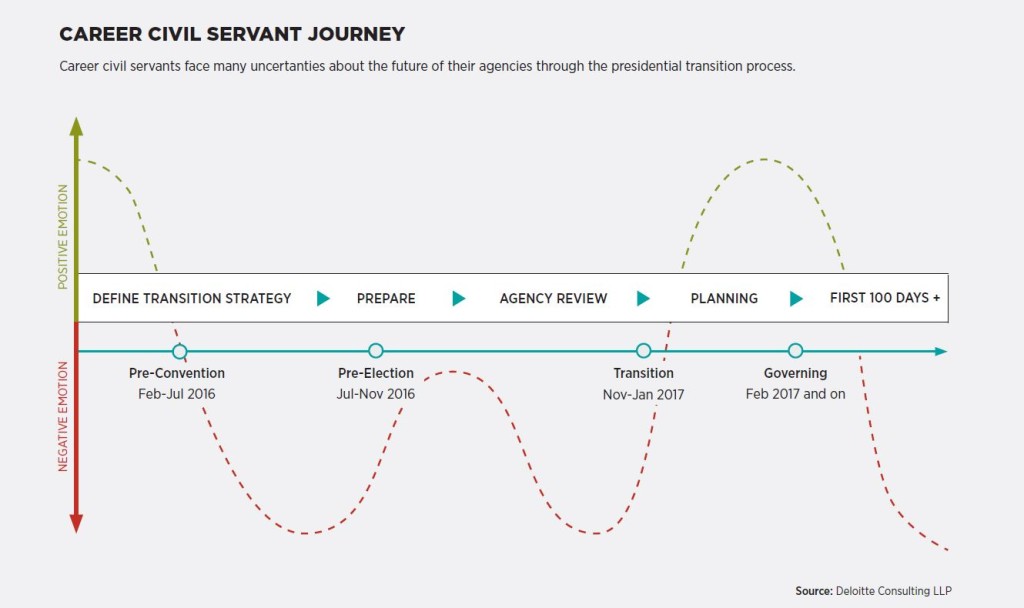Career employees seeking better presidential transition communication
When it comes to presidential transition plans at federal agencies, career federal employees say their managers aren't doing enough to keep them in the loop.
When it comes to presidential transition plans at federal agencies, career federal employees say their managers aren’t doing enough to keep them in the loop.
Employee engagement data from the Partnership for Public Service shows a double-digit divide between how career employees and managers rate their satisfaction with their department’s communication, and an even larger divide between members of the Senior Executive Service and non-SESers.
Divided opinions over communications come at a time when agencies have begun preparing their transition strategies in preparation for the more than 4,000 political appointees that will enter the federal government with the next presidential administration.
Keeping career employees on the same page as their bosses, the Partnership said, could play a significant role in ensuring a smooth transition between the outgoing and incoming presidents.
“Whether serving on an interim basis for political appointees who have departed before their successors are in place, getting newly appointed political employees up to speed, or maintaining
focus and continuing to do high-quality work to advance their agency missions, career civil servants are essential to the transfer of power,” the report said.
The Partnership based its findings on its Best Places to Work data, which come from information taken from Office of Personnel Management’s 2015 Federal Employee Viewpoint Survey. The reports urges management, especially those at the lower echelons, to consider revamping their strategies to keep career employees informed.
The report urges managers to use the upcoming transition as an opportunity to re-engage workers on the agency mission and take stock of the most important project that should be brought to the attention on the incoming transition team. Goals and progress should be made early and often, and presented to reflect the fact that millennials in the workforce communicate differently than their more senior coworkers.
Sponsored Content: How secure is your network? Share your opinions in a Federal News Radio survey.
One agency, the Partnership found, created an online “wiki” page for employees to share and update information about the transition, where older workers may be more comfortable receiving updates with phone briefings or newsletters.
| Difference in response between staff and managers or SES | ||||||
| Questions | Managers | Staff | Difference | SES | Non-SES | Difference |
| How satisfied are you with the information you receive from management on what’s going on in your organization? |
58.6% | 44.0% | -14.6 | 78.3% | 44.3% | -34.0 |
| Managers promote communication among different work units (for example, about projects, goals, needed resources). |
60.9% | 45.7 | -15.2 | 80.3% | 46.4% | -33.9 |
| Managers communicate the goals and priorities of the organization. | 67.3% | 55.8% | -11.5 | 83.8% | 55.5% | -28.3 |
The report also urges management not to overdo it with department-wide “town hall” meetings on transition updates. Employees, it found, responded more positively to small-group meetings that offer more face time with conversation leaders, and more opportunity to ask questions.
When it comes to bringing new political appointees into the organization, the Partnership urged agencies to make effective use of the time following the Jan. 20 inauguration, when nominees await confirmation from the Senate.
Maximizing that down time, the Partnership says, ensures a more seamless transition between administration, since many politicals have no prior federal government experience.

Copyright © 2025 Federal News Network. All rights reserved. This website is not intended for users located within the European Economic Area.
Jory Heckman is a reporter at Federal News Network covering U.S. Postal Service, IRS, big data and technology issues.
Follow @jheckmanWFED






